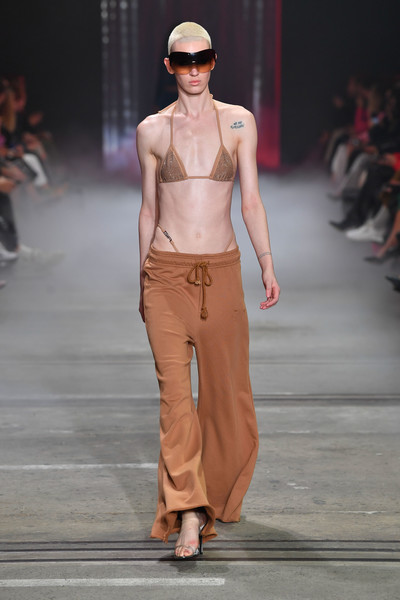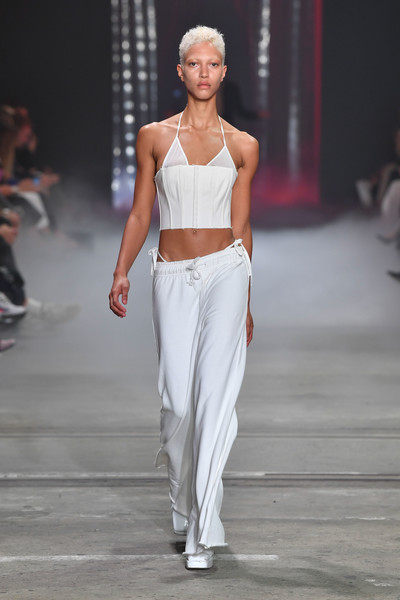MBFW showcased a predictably thin tribe of models and in the case of I.Am.Gia, we’re left wondering: why?

When Aussie-born, Instagram-bred label, I.Am.Gia, launched last year I got the new-clothes tingles. Boiler suits and cargo pants dripping in cool-girl, cult-y status promised an entire evening of “add to cart” excitement.
The excitement, however, was only in part down to the clothes. Here was the ultimate modern fashion brand, making its home on Instagram’s lawn and discarding all the rules to join the landscape of Millenial labels: Poppy Lissiman, Realisation Par, Orseund Iris and Cult Gaia, to name but a few. Like the others, I.Am.Gia ditched the traditional business model, unhinging itself from seasonal deliveries in favour of anti-calendar, monthly drops in trans-seasonal styles. Trend research was replaced by character-cum-muse, Gia Carangi, and the marketing budget by IT-girl “gifting.”
Turns out, everyone was just as excited as I was. Before long, irrefutable IT-girl of the moment, Bella Hadid, was parading around in Gia’s sell-out cargo pants as part of her signature badass aesthetic.

Fast-forward a year and founders Alana and Stevie Pallister announced their debut show at Sydney’s Mercedes-Benz Fashion Week, a week that showcases the likes of international powerhouses Zimmerman and Camilla and Marc. That $90 pants would be making their way down a Fashion Week runway was worthy of applause, especially for a brand that had rocketed to success in less than a year. There is, of course, precedent for affordable brands showing at fashion weeks, but no doubt the runway remains largely in the hands of high fashion. Here was I.Am.Gia smashing more of the industry’s worn-out grooves. But one standard, in particular, was left unchallenged.

The girls that walked the Carriageworks’ runway were skeletal thin. Nothing out of the ordinary, sure, we’re all familiar with the extreme industry standards. But I couldn’t help feeling disappointed. I.Am.Gia. made its success smashing fashion’s more traditional practices: spurning seasonal deliveries, trend-research and paid marketing campaigns. Why couldn’t they set a new standard for one of the industry’s most controversial practices?
And it’s not merely that I “expected better” from a brand run by two young women. Rather it’s that the Gia aesthetic speaks of a woman fighting against the grain. A woman who is at once sexy and grungy, feminine and masculine, who is bold and fearless, an advocate for tearing up stereotypes. Choosing a full cast of very thin models does nothing to do away with fashion’s stereotypes. It didn’t match what I had understood of the brand’s ethos.
Instead of celebrating the progression of fashion, all I saw when tuning into the brand’s live stream of the show was a tribe of predictably waif-like models, made glaringly apparent in I.Am.Gia’s sexed-up ensembles.
Not to diss smaller-chested women, but surely the best way to show off bra-tops would be to fill them with, I dunno, boobs? Could we at least have seen a show of better diversity on the young brand’s catwalk? It felt jarring to watch these impossibly thin girls clad in sexualised getups.
Thin girls must, of course, be included in the anti-body shaming movement. But brands must also step up to the mark and act on a responsibility to showcase a variety of healthy body types.
What did you make of the lack of diversity? Let us know below!







